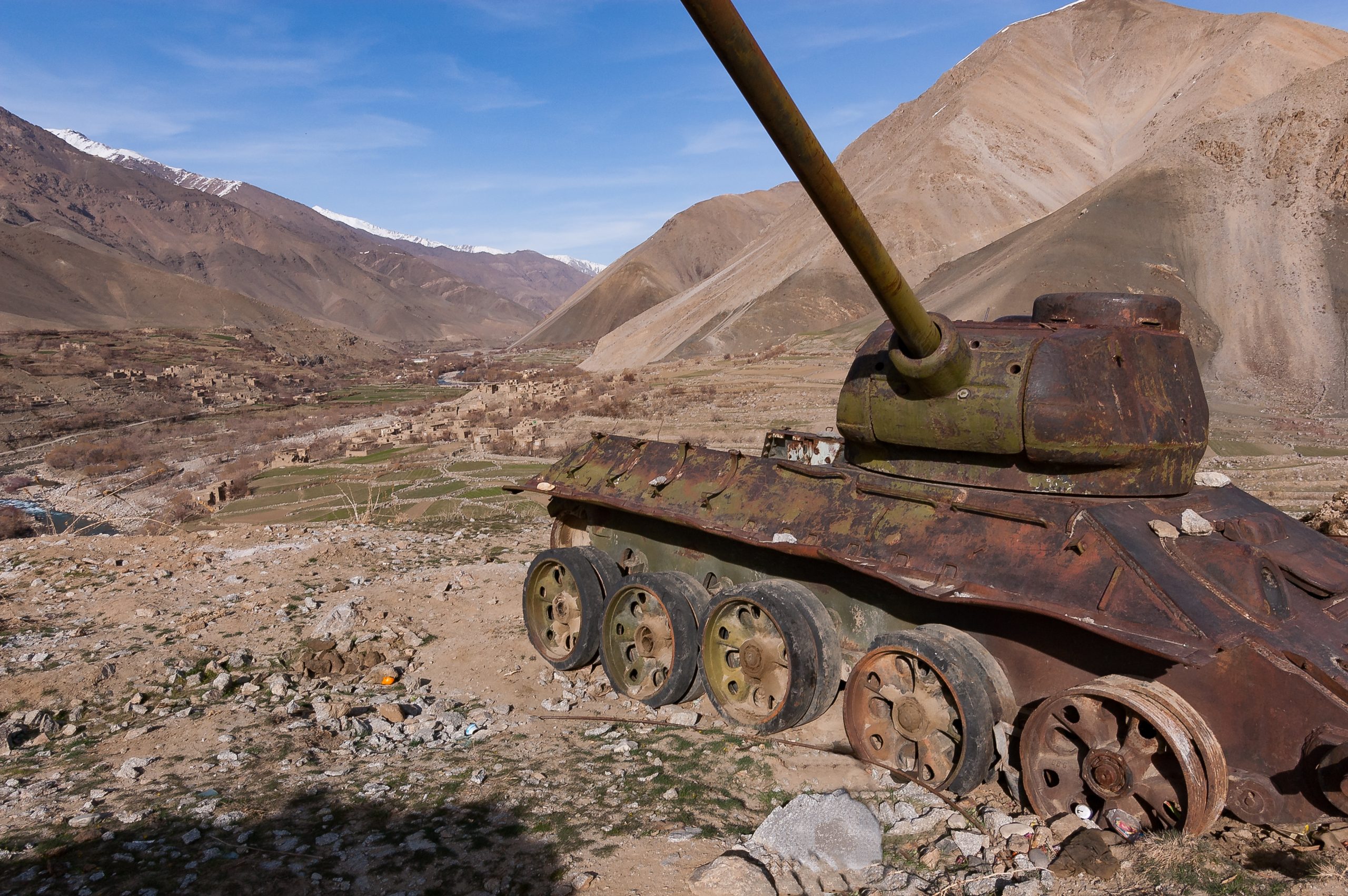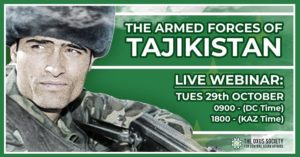Reframing Russia’s Afghanistan Policy
This article is a collaboration between the Foreign Policy Research Institute and the Oxus Society for Central Asian Affairs. It is based on my recent paper presentation at the British International Studies Association (BISA) 2021 Annual Conference.
As the deadline for the U.S. withdrawal from Afghanistan looms, the Taliban has gone on the offensive, capturing over fifty additional districts in the country since May 2021. Several hundred Afghan soldiers have fled the country crossing to its neighbours to the north, with several thousand civilians reportedly applying for visas in Uzbekistan. The government of Uzbekistan has established refugee camps in anticipation of a large influx of people crossing the border in the coming months. Tajikistan’s government, meanwhile, has called on its allies in the Collective Security Treaty Organization (CSTO) to help secure its border with Afghanistan.
One external actor looking closely as these developments unfold is Russia. While less involved in Afghanistan than the U.S. has been since 2001, Russia has been a fixture in the Afghan civil war for decades. Most well known of Moscow’s recent overtures have been its peace initiatives. Recently, in March 2021, Russia hosted a peace conference between the Afghan government and the Taliban. Whether the Russian settlement plan of an interim government with Taliban participation will succeed remains to be seen. But its eventual fate does not negate the fact that Russia has been a lingering presence in the country.
While many have noted its persistence and relevance, analysts have frequently written off Russia’s Afghanistan strategy as principally shaped by external events and lacking foresight. As the argument goes, Moscow’s Afghanistan strategy has been shaped by the 1989 Soviet withdrawal, the collapse of the Soviet Union in 1991, the fall of Najibullah in 1992, the war in Tajikistan 1992-1997, the rise of the Taliban in 1994-1995, and later on the U.S. operation in Afghanistan in 2001 and the rise of ISIS in 2014-2015. The picture that emerges is thus one of Moscow acting in Afghanistan primarily by reacting to events on the ground it did not take a major part in shaping. Yet in reality, Moscow’s policy has been remarkably constant despite these changing events.
Fixtures in Moscow’s Afghanistan Strategy
Moscow’s military deployments in and around Afghanistan point to this continuity in its Afghanistan strategy. During the Soviet Union and since its collapse, Russia has had a military presence in the Central Asian ‘frontline’ states, in particular Tajikistan; has had direct engagement with the warring parties inside Afghanistan itself; and limited diplomatic initiatives meant to facilitate the two. These three measures form the basis of Russia’s ‘containment policy’ for Afghanistan. Russia’s goal is not to resolve or manage the civil war in Afghanistan. Instead, its objectives are operational; namely, to ensure Russia’s own security by ‘containing’ the ‘instability’ from Afghanistan, ensure a continued Russian presence in Central Asia and facilitate Russia’s peace initiatives.
The first measure, border protection, is the best known and is the one that has had the clearest continuity since 1989. Indeed, the 1989 Soviet withdrawal did not make Moscow demilitarise its border with Afghanistan. The Soviet collapse saw many of the former-Soviet forces stationed there be handed over to the Russian Federation, which Russia thus (assertively) offered to the ‘frontline’ states of Tajikistan, Turkmenistan and Uzbekistan, as border protection. Only the two former states accepted the offer, and by 1999 only Tajikistan remained, only to take control of its border from Russian forces in 2005.
The latest events in Afghanistan have given new life to Moscow’s border security measures. Turkmenistan and Uzbekistan have reportedly increased their security cooperation with Russia at their borders with Afghanistan. While no Russian staff seem to be working at their borders, assistance has been reported as coming in the form of advisors and border security experience exchange. Most recently, Tajikistan requested assistance from its Collective Security Treaty Organisation (CSTO) allies. The shape of this help is yet to be determined. But Russian Foreign Minister Sergei Lavrov declared that Russia’s Tajikistan base is ready to provide necessary assistance in the case of incursions from Afghanistan.
The second measure is engagement with parties on the ground in Afghanistan. Engagement with a main interlocutor was a constant for Moscow: Najibullah from 1989 to 1991; the fledgling Kabul government from 1992 to 1994; and the anti-Taliban coalition of the Northern Alliance from 1995 onwards. Parallel to these engagements was a dialogue with the other warring parties in the hopes of a peace process. This was visible even during the Najibullah era as Moscow began to aim in 1989 to have opposition parties join a coalition government that would retain its influence through Najibullah. Engagement with these and other parties was a constant of Russia’s containment policy. As the U.S. entered Afghanistan in 2001, Moscow and Washington broadly agreed on which parties to support—the Northern Alliance, but their approaches began to diverge around the mid 2010s when in Moscow the taboo of engaging the Taliban was broken as the Islamic State (IS) threat grew.
Finally, operational diplomacy was also present to assist border protection and engagement. Border protection—while a constant—shifted according to its relations with the frontline states. For instance, as relations worsened between Ashgabat and Moscow in the late 1990s, military cooperation deteriorated, with the border force a casualty. Another component of this diplomacy was engagement with other external parties to the conflict. As the post-withdrawal realities settled for Moscow in 1989 and 1990, Moscow sought greater involvement of the UN in Afghanistan. This was a shift for Moscow, as previously it sought to stop any other external actors from playing a role in that civil war.
Adaptations to Come
These three measures—border protection, direct engagement and diplomatic engagements with other external actors—took shape as Soviet troops left Afghanistan and continued throughout the 1990s and into the 2000s. These measures continued even during periods of lower Russian interest in Afghanistan, such as between 1992 and 1994. They changed and adapted to shifting conflict dynamics on the ground, but remained constant in their thrust to contain the threat of conflict spilling over from Afghanistan and keeping a strong Russian presence in the region.
In the late 1990s, Iran, India and Russia cooperated in making arms deliveries to the anti-Taliban coalition. Since 2001, Moscow’s attention on Afghanistan has been mostly absorbed by the U.S. and NATO, with progressively greater roles for the Shanghai Cooperation Organisation and China. Russia’s brief rapprochement with the U.S. over Afghanistan in the early 2000s can be read not only as an event in U.S.-Russia relations, but also as another diplomatic engagement in Moscow’s containment policy. Namely, the U.S. and Russia coincided in which parties to support—the ‘Northern Alliance’ and the Kabul government—up until the 2010s as noted above.
What is next in the diplomatic front of the containment policy remains to be seen. Neighbouring China is expected to take on a larger role now unlike the 1990s. Notably, Beijing has been fostering relations with the Taliban for decades, with the latter inviting Chinese investments into the country. Reportedly, China is already eyeing a role post-U.S. withdrawal from Afghanistan, notably through the Belt and Road Initiative. Moreover, the recent diplomatic tour by Chinese Foreign Minister Wang Yi involved discussions with his Central Asian counterparts on Afghanistan. An expanded Chinese diplomatic, commercial and security presence in Central Asia and Afghanistan will expand the Central Asian dimension of Sino-Russian relations, with new potential for cooperation as well as misunderstanding.
Focusing on the continuity in Russia’s Afghanistan strategy gives us a better understanding about what matters to Moscow. The logic behind Russia’s containment policy can point to some potential outcomes in the near future. It is possible to speculate that, as the U.S. approaches its Afghanistan withdrawal, Russia will welcome other third parties willing to contribute to its ‘containment policy’ by engaging Afghanistan along parallel lines. If a greater Chinese presence—for instance—contributes to Moscow’s containment policy, then it will likely be welcomed by the Russian government.
Ivan U. Klyszcz is a PhD candidate in International Relations at the University of Tartu, Estonia. You can follow him on Twitter @IvanUlisesKK.




